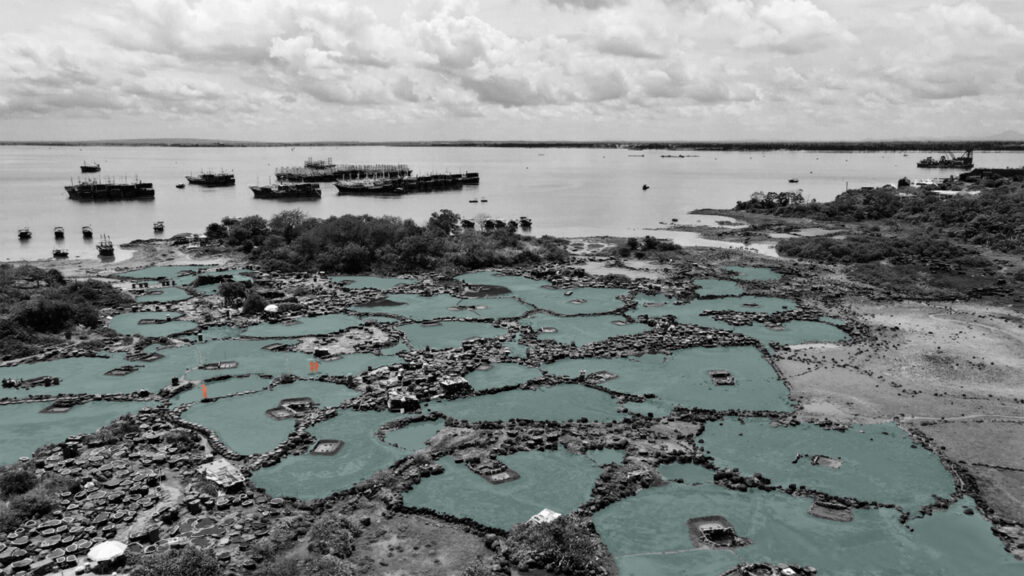
A traditional sun-dried sea salt production technique developed by Chines salt farmers.
Ran Yan
2021
The ancient volcanic eruption created a lot of volcanic rocks on the wide coastline and tidal flats in the northern part of Danzhou. The suitable climate and natural conditions make this place an excellent location for the harvest of sea salt. Thus, the residents have been living on sea salt since 1200 years ago. Their ancient salt fields are precious living heritage of Chinese sun-dried salt production.
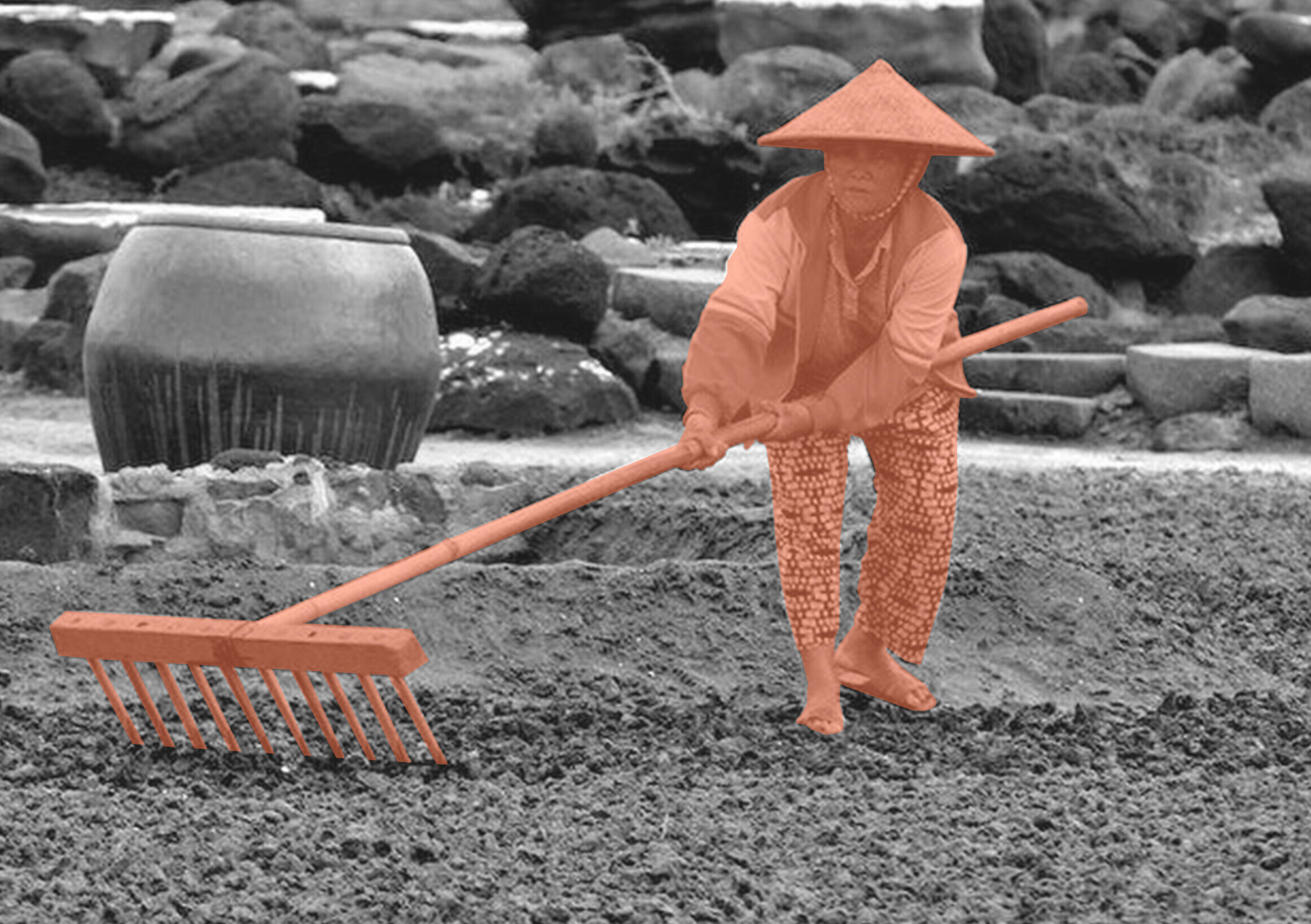
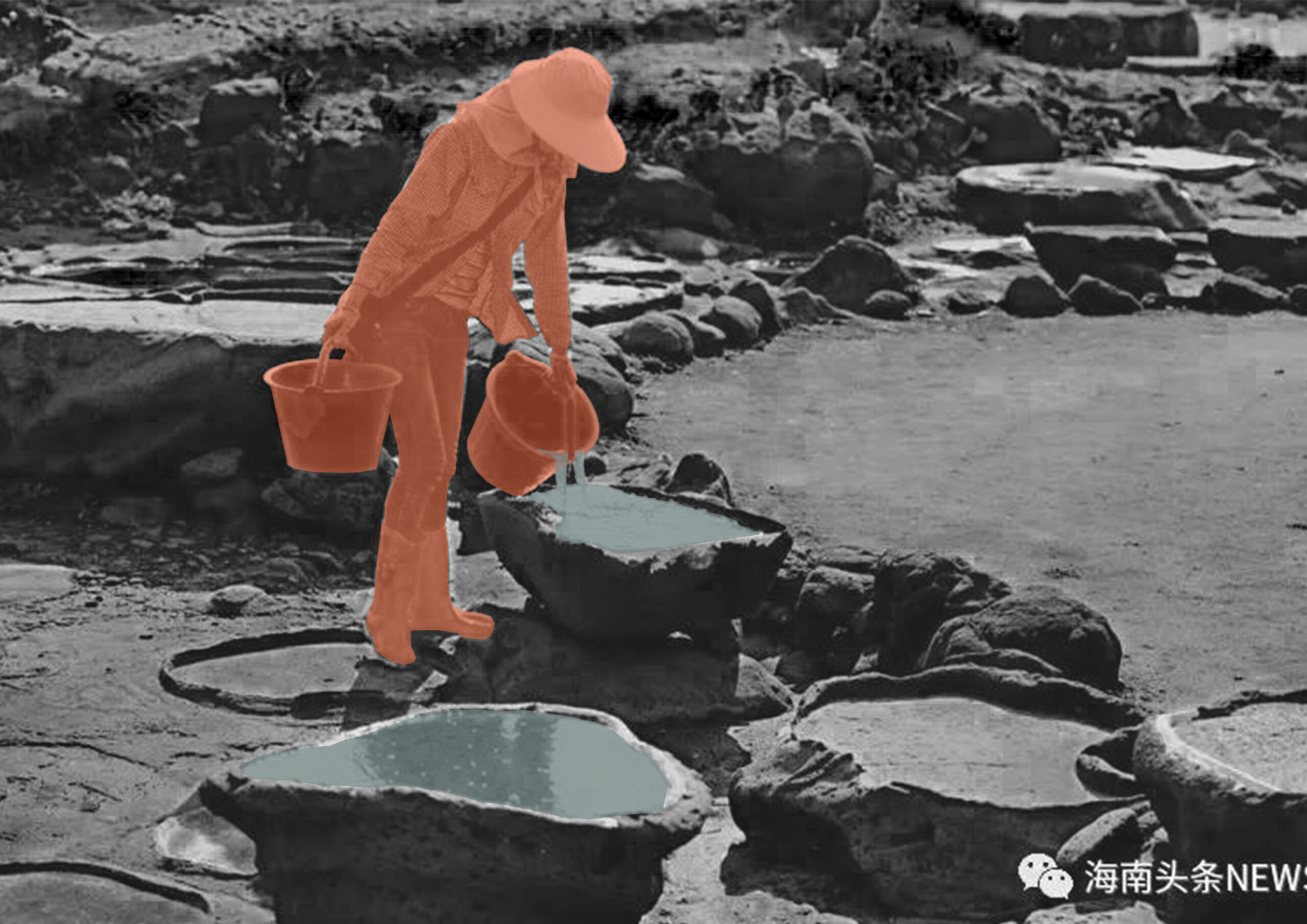
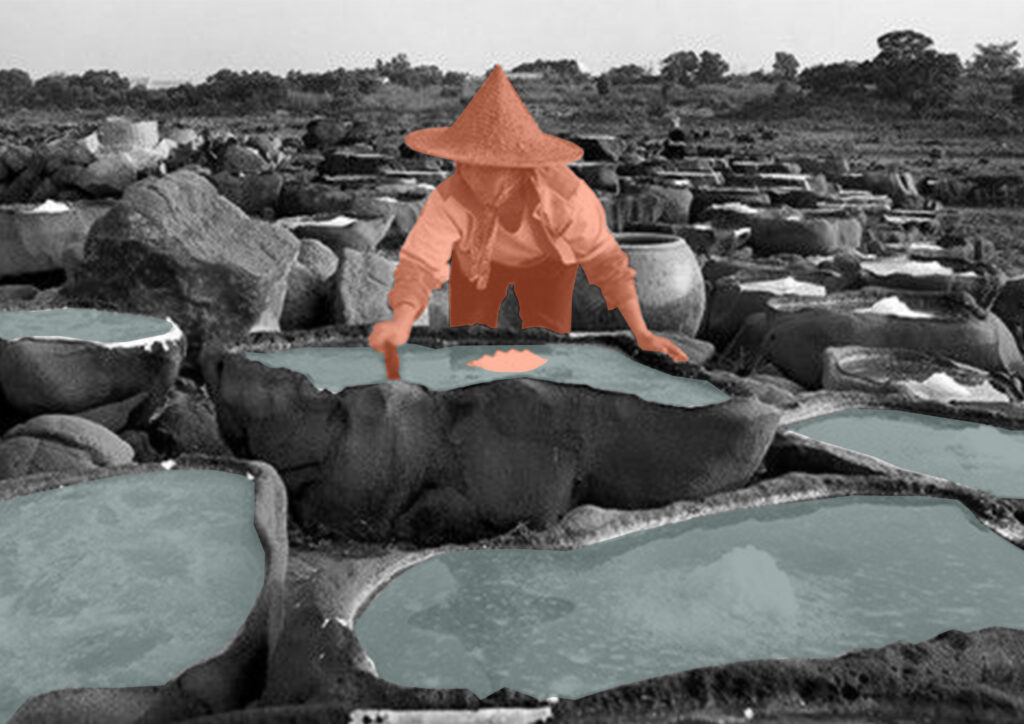
The seawater of Danzhou north has high salinity, which creates unique conditions for the production of sea salt. In addition, due to the exposed bedrock on the surface, many volcano stones became natural materials for the ancient villagers’ salt production system. This basalt has good durability, which ensures the salt tank being existed for longer periods under the perennial erosion of seawater and sea breeze and left as salt fields heritage landscape till now.
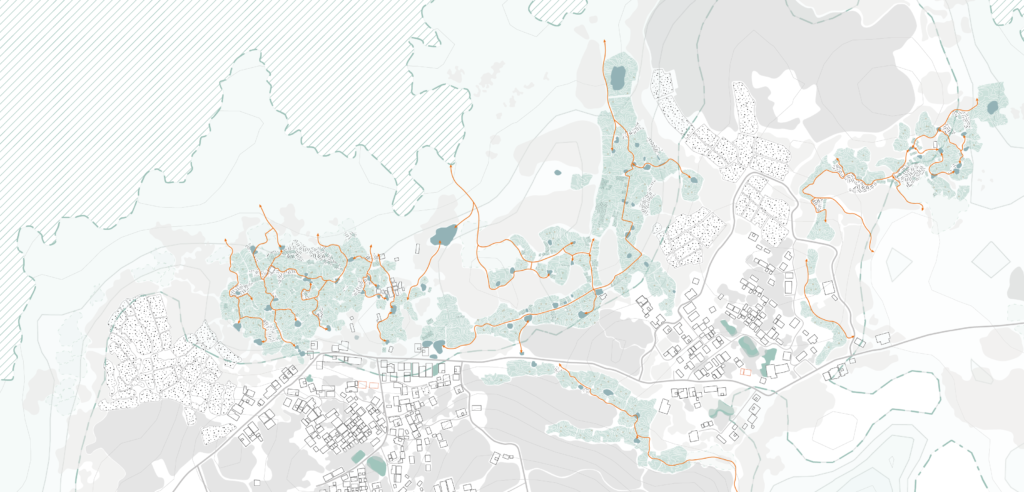
The formation and harvest process of salt fields are closely related to the intertidal zone. Salt fields are mainly distributed in the intertidal zone, and their components play different roles with the rise and fall of seawater. At high tide, the water level is higher. The water canals that connect the salt fields to the coast will be filled with seawater, which will flood the higher water ponds and sand ponds. After low tide, seawater left in the aqueducts and ponds will continue to replenish the salt in the mud. The villagers then filter the evaporated salt mud and pour the brine onto the rock and let the sun evaporate till the sea salt appears.
Circular Stories

Collect seawater: the tidal power will flood the seawater into the salt fields and fill the seawater pools and sand ponds along the canal. The process soaks the salt mud of the sand ponds so that it fully absorbs the salt in the seawater.
Rake sand: after the tide receded, the salt mud(sand) was saturated with salt, and the salt farmers would use wooden harrows to rake the sand in the salt fields. When the water in the salt mud is evaporated, the salinity of the sand will increase.
Filter out the sand: after being exposed to the sun, salt farmers use wooden rakes to gather together the saltier mud and stack it in a filter. They then poured seawater over the salt mud that had accumulated in the filter and dissolved the salt in the mud with seawater. Through a thatch filter, the salt will follow the seawater into the brine pond.
Detect salinity: the salt farmers use a shrub (Asima sarmentosa) to test the concentration of the brine. If the stems of this plant float up quickly in the brine, then, the brine has reached a sufficient concentration for the salt to be dried.
Harvest salt: The salt farmers transfer saturated brine onto the salt stone with buckets. After half a day of exposure, the saltwater will crystallize into pure sea salt.
